Samia Cynthia
posted April 26, 2001


Samia cynthia mate very readily in captivity, even in small cages. The ovapositing urge is very strong, and this female continues laying despite her awkward position on the table.Deposition on the undersides of foliage hides eggs from some predators. The soft abdomen is very pliant. | 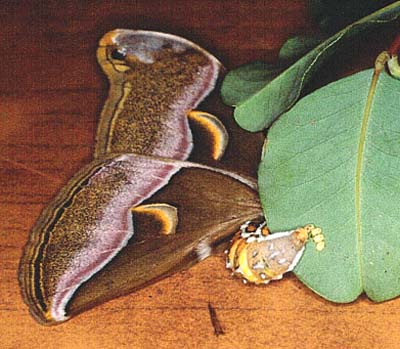 |
Eggs are relatively small and are usually deposited in short rows of five to eight. Females have been known to carry over five hundred eggs. | 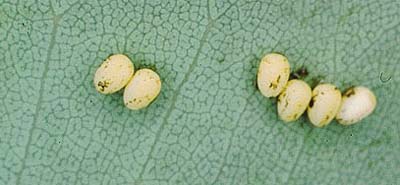 |
Females will readily ovaposit on paper and other strata when foliage is unavailable.Incubation lasts 7-10 days in summer heat. Tiny larvae chew through the sides of eggshells to extricate themselves. | 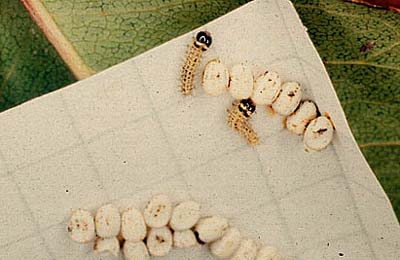 |
Growth is very rapid under warm conditions and larvae progress through the first four instars in slightly less than a week/instar.Fourth instar larvae to the right continue with the brilliant white body colouration adopted in the third instar. Heads and feet are now bright yellow. | 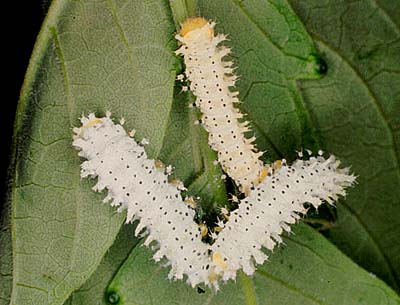 |
Larvae bulk up considerably in the final (fifth) instar.Skyblue "knee socks" offer a striking contrast to the white body and yellow feet. Lengths of 7-8 cm are easily obtained. | 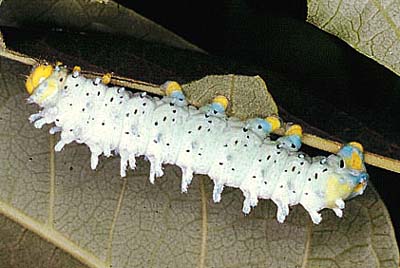 |
 | After 7-10 days of feeding in the final instar, larvae begin spinning a long narrow cocoon in a leaf wrap. Silk tends to be a light grey and the leaflet stem is securely fastened to the compound leaf structure of the host with a strong and extensive silk peduncle.(Bill Oehlke) has reared larvae to full size on pin cherry. Silk was an orangey-brown. Moths were beautiful. This is a relatively trouble free species, and many alternate hosts (see Samia cynthia advena in the Main Index) are accepted besides the preferred ailanthus. |
Don Oehlke (OH-KEY) in New Jersey still has Samia cynthia livestock available. Dad's phone number is 908-439-2462. In the U.S. this moth was introduced in the 1800's to try to establish a silk industry in the middle atlantic states. Wild populations still exist in Connecticut, New York, Pennsylvania, New Jersey and possibly a few other states. In the U.S. moths tend to eclose in July during a heat wave.
Return to Photo Index
Return to Main Index